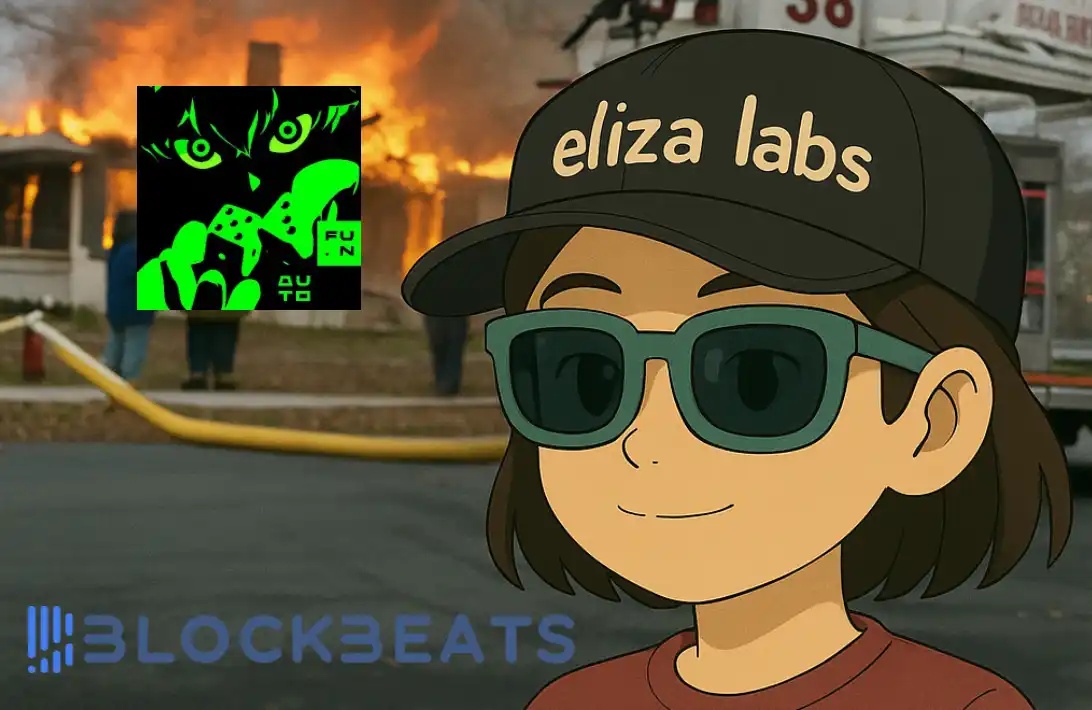StarkNet founder reviews airdrop: How to view community anger, future plans and personal feelings
Original title: Airdrop Reflections
Original author: Eli Ben-Sasson, founder of Starknet
Original translation: Azuma, Odaily Planet Daily
Now that the first phase of the Starknet airdrop event (Provisions) has ended, I would like to share some of my personal feelings. Nothing described below constitutes investment advice and does not necessarily reflect the position of StarkWare or the Starknet Foundation. DYOR.
What is Starknet? Why STRK?
Starknet is a ZK-Rollup network. We launched Starknet in Alpha mode in November 2021, which aims to use the STARKs cryptographic protocol to scale Ethereum without compromising Ethereum's core principles, such as decentralization, transparency, inclusivity, and security.
The STRK token empowers those who wish to contribute to the ecosystem to play a role in governing, operating, and protecting the Starknet network. STRK has three main use cases - governance, paying gas fees on Starknet, and participating in Starknet's consensus mechanism.
The Starknet Foundation is distributing STRK to valued community members who have demonstrated their desire to advance, maintain, and protect Starknet through multiple events, such as Devonomics, Catalyst, DeFi Spring, and the focus of this article, Provisions (i.e. airdrops).
On February 14, 2024, the Starknet Foundation announced the first round of Provisions, which is expected to allocate up to 700 million STRK tokens, which come from the 900 million STRK reserved for the Provisions event. The claim lasted for four months, from February 20, 2024 to June 20, and ultimately about 500 million tokens were claimed, and the remaining approximately 400 million STRK will be used for future airdrop rounds.
What is the goal of Provisions?
The main goal of Provisions is to distribute STRK tokens to a wide range of individuals, that is, real users, who will conduct activities on Starknet and contribute to its security and governance, thereby advancing the decentralization of Starknet. Starknet is both a technology and a social tool that allows individuals and societies to implement any social functions they need on it, such as currency, assets, governance, etc. Therefore, the security of Starknet is directly related to the size and resilience of the people who care about it.
A big challenge faced by Provisions is that "blockchain cannot represent real people". What I mean is that the basic unit on the chain is the account address, not the human/user. There is no clear correspondence between the two, and one person may control multiple addresses.
Based on the existing information on the chain, it is difficult to judge which accounts represent humans/users who are more likely to contribute to the future operation, security and governance of Starknet. In other words, the question is, based on data about accounts and their activity on-chain and elsewhere, how can STRK be properly allocated to humans/users who are aligned with the Starknet mission over the long term?
First, it is important to understand that there is simply not enough data available to accurately answer this question. Everyone involved in the design of Provisions realized early on that all potential calculations would only yield a relative result, and not a perfect answer to all goals - there would be some humans/users who were fully aligned with the Starknet mission who would receive only a small amount of tokens, or even no tokens, and there would be some humans/users who were less aligned with the mission who would receive a large amount of tokens.
Given the public criticism that Starknet Provisions has faced, and the subsequent criticism that has been faced by airdrops such as Eigenlayer, ZKsync, and LayerZero, I think it is important to make this point. To my knowledge, no existing scheme can achieve the above goals more accurately or fairly than ours. The allocation scheme may not be perfect, but using other metrics will also lead to different inaccuracies.
How did the Starknet Foundation design the airdrop?
The Starknet Foundation included six groups in the airdrop, and the allocation within each group was based on metrics/data relevant to that group.
· Starknet users: mainly consider address activity indicators, and entrust external third parties to conduct witch screening;
· STARK early adopters: allocation based on the user's use of StarkEx before Starknet;
· Ethereum contributors: mainly include individuals who have contributed to Ethereum in various ways (staking, development, submitting Ethereum improvement proposals, etc.), and each subcategory has specific indicators;
· Github developers: allocation to developers of selected open source code projects on Github based on Github activity indicators.
· Early Community Member Program (ECMP): Individuals who contribute to the Starknet ecosystem by holding events, promoting the development of the Starknet community, etc. can obtain tokens by applying in advance. A committee composed of ecosystem members will decide on the allocation based on the review results.
· Developer Partners (DP): Infrastructure developers who have a prior agreement with the Starknet Foundation will also receive token allocations. This is an agreement reached between the Starknet Foundation and the developer team in advance.
In summary, the basic philosophy of Starknet is to try to distribute STRK to a diverse range of groups that Starknet believes are well suited to operate, care for and protect the future of Starknet based on their past actions and contributions.
Do Provisions achieve their goals?
As mentioned above, we knew from the beginning that the allocation of STRK could not be completely accurate due to the lack of metrics. This leads to the following questions: Have we done our best with the data we have? How do we evaluate the allocation results - to what extent do the addresses included in the airdrop correspond to real people/users?
· Among the six groups mentioned above, the last three groups can be confirmed to correspond to real humans one by one, and we can even further speculate that these people are likely to continue to care about the future of Starknet.
· For the third group (Ethereum contributors), except for the staking subgroup, most of the other subgroups included in the airdrop may meet the standard of "one address corresponds to one human/user", and their past actions have shown that they are willing to care about the decentralization process, so we can hope that they will also care about and help Starknet.
· The second group (StarkEx users), as early adopters of STARK technology, has the smallest claim rate and airdrop size (only 2.4 million STRKs were claimed, less than 1% of the total allocation), so it can be ignored.
· The most difficult to evaluate is the distribution results to Starknet users, who received over 87% of the airdrop share (over 430 million STRKs). The public dissatisfaction after Provisions was also mainly focused on the distribution to this group.
There was a lot of discussion on social media about this, most of which was very negative, and many people mentioned the balance threshold issue - Starknet requires at least 0.005 ETH to be held on a specific date. There have also been other controversial incidents, such as a StarkWare executive’s fiery words that sparked community anger, and he quickly apologized for it; the unlocking plan for StarkWare shareholders (including investors, founders, and employees) was also criticized, and we have since revised the unlocking plan.
The criticism about the “0.005 ETH threshold” and “electronic beggars” has been long-lasting, and although the criticism about these two issues has been greatly reduced recently with the emergence of some new airdrop controversies, it has not completely disappeared yet.
How should we view this anger in the community? To what extent does it come from professional farming teams who try to rationally influence the airdrop standards for this round and subsequent rounds (not limited to Starknet)? To what extent can it represent a certain group of people (farmers or non-farmers)? If a different allocation method is adopted, will they contribute to the long-term success of Starknet? These are all research questions I would like to see answered. If you have a way to deal with this issue, please post your suggestions on the Starknet community forum and @ me.
So far, I’ve discussed social media sentiment related to Starknet user distribution, and now it’s time to consider a larger question. Did Starknet’s airdrop go well? The answer is that I don’t know, and the reason is that we lack the metrics needed to answer this question, which is the same problem that we couldn’t accurately complete the token distribution in the first place. The metrics available on the chain, such as TPS, TVL, number of addresses, and coin price, do not directly answer the following question - "Are STRK holders a broad and diverse group of people? Will they stay and continue to improve, operate, and protect Starknet?"
I’d love to hear an answer to this question as well. If you have ideas for handling this, please post them on the Starknet Community Forum and @ me.
How do I feel personally?
This may sound like a strange question, but I’m sure many people would like to hear the answer. The entire team was under tremendous mental strain working on Provisions, especially Abdel and I, who were the focus of personal attacks.
In response to a Twitter feed filled with false information (and worse), we supported each other not only within the Starknet Foundation or the StarkWare team, but also relied on the unwavering support of the amazing Starknet ecosystem. Although this was a difficult time to get through, it ultimately proved to be valuable, highlighting some areas of work that needed improvement and testing the resilience of our team.
We learned the importance of firm decision-making, but also the need to be open to constructive feedback, even if it was harsh. This experience has reinforced our belief that in crypto, the way we handle public pressure is just as important as technical decisions. It was very inspiring to see people from other ecosystems (and sometimes even our competitors) reach out and offer support, and I will never forget that help. Most importantly, we drew strength from the amazing Starknet ecosystem.
Future, how can we do better?
With approximately 400 million STRK still to be used for future airdrop rounds, how can we do better?
Obviously, "identity" on the blockchain is a hard problem to solve, and we are not sure we can solve it, but this is something we are passionate about.
The incentives for professional airdrop farming teams to influence subsequent airdrop rounds remain strong, which means that no matter what we do, there will be public protests on social media. For me, this is an inevitable and unpleasant side of the cryptocurrency industry.
I hope that the Starknet Foundation and its Provisions team can find new ways to distribute tokens to a diverse group of people who care about Starknet's long-term vision and mission and are willing to stay and help it grow. I know this is their desire and they are also conducting research and discussions to achieve this goal.
In summary, Provisions are designed to get STRK into the "right hands". To be honest, I don't know if the Starknet Foundation's design (especially the design of the distribution to Starknet users) is accurate enough, and I hope that future community research can answer this question. I will definitely continue to think about this issue and plan to share my suggestions at some point in the future.
I would love to hear more thoughts about the token distribution mechanism from people inside and outside the ecosystem. If you have any, please speak up on the Starknet community forum.
Original link
Welcome to join the official BlockBeats community:
Telegram Subscription Group: https://t.me/theblockbeats
Telegram Discussion Group: https://t.me/BlockBeats_App
Official Twitter Account: https://twitter.com/BlockBeatsAsia
 Forum
Forum OPRR
OPRR Finance
Finance
 Specials
Specials
 On-chain Eco
On-chain Eco
 Entry
Entry
 Podcasts
Podcasts
 Data
Data

 Summarized by AI
Summarized by AI







